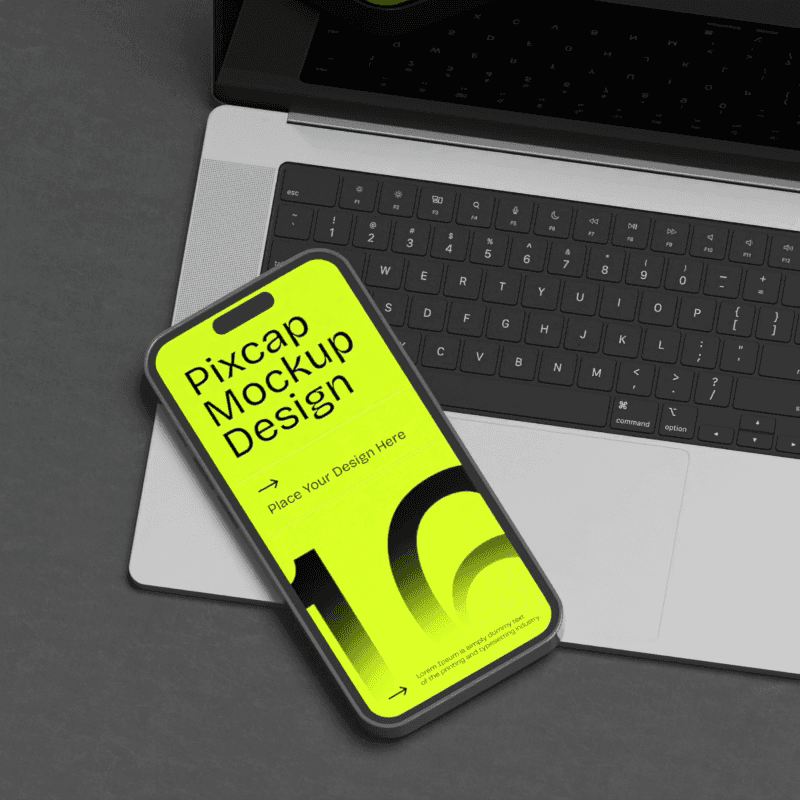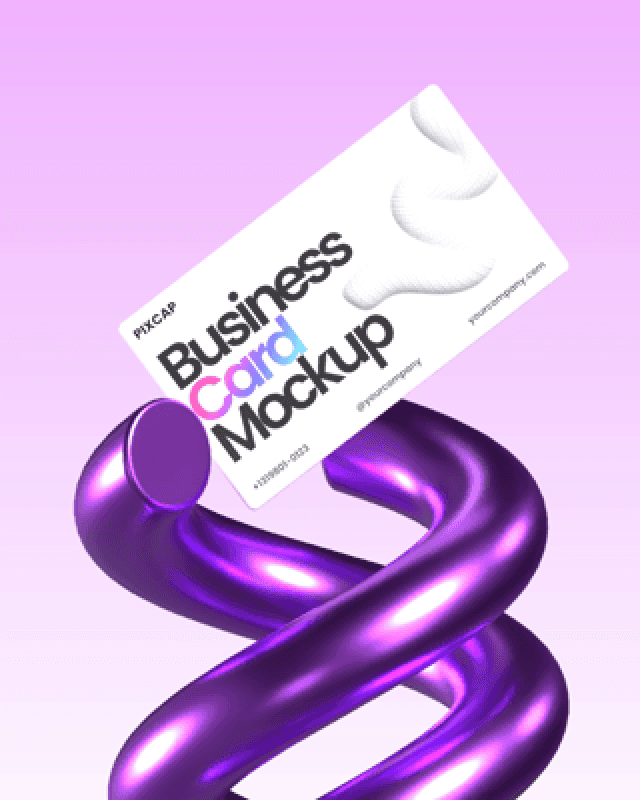Logotype and logomark are two common types of visual identities used by businesses, organizations, and individuals to represent their brand. They are often used interchangeably, but they actually have distinct meanings and uses in the design world.
In this guide, we will explore the differences between logotypes and logomarks, why choosing one over the other matters, and how to effectively use each type in digital design. So, whether you are a freelance designer or working for a company, understanding logotypes and logomarks is crucial for creating effective visual identities.
What Is a Logotype?
The term "logotype" has its roots in the Greek words "logos," meaning "word," and "typos," which means "imprint word mark" or "type." Historically, a logotype was a single piece of type that cast a word or group of letters as one printing block, rather than individual letters. This was used extensively in the early days of printing for efficiency and to ensure consistency in branding materials.
Over time, the concept evolved in the realm of design to signify a specific type of brand marking: one that incorporates the name of a company or product in a stylized font or unique typography. Unlike symbols or icons, a logotype focuses on the name itself, crafted to convey the brand's identity through customized lettering that is often unique and recognizable. This understanding of logotype is particularly important in today's digital marketplace, where a strong visual identity plays a pivotal role in a brand's overall perception and marketing success.
Key Elements of a Logotype
A logotype is not just any written name of a brand; it requires careful consideration of various design elements to be effective. The key elements include font style, size, color, and spacing. Each of these aspects plays a vital role in how the logotype communicates the brand's personality and values. The font style, whether serif, sans-serif, script, or decorative, should align with the brand's image and be legible across various media. Size matters for visibility and impact, while color conveys meaning and emotion, and should be chosen based on color psychology that aligns with the brand's message. Spacing, or kerning, between letters is also crucial, as it affects readability and the overall aesthetic of the logotype. These elements combined create a cohesive visual representation that can be powerful enough to stand on its own, encapsulating the brand's identity in text form.
Famous Examples of Logotypes
Renowned examples of logotypes abound in the corporate world, where distinct typography has cemented the corporate identity elements those of many leading brands.
Google's logotype is instantly recognizable, with its simple, sans-serif typeface and a playful color scheme that underscores its approachable brand personality.
Coca-Cola's cursive script has become iconic, with its red and white color palette evoking feelings of nostalgia and enjoyment.
The high-fashion industry offers the sleek, minimalist logotypes of fashion brands like Chanel and Gucci, which exude luxury and sophistication through clean lines and classic fonts.
In the tech industry, the straightforward, modern logotype of IBM, known as the "eight-bar" logo, illustrates the company's strength and stability.
More famous examples of logotypes include Barbie logo, Disney, FedEx, Facebook, Netflix, Subway, Yahoo!.
These logotypes have become synonymous with their brands, proving the power of strong typographic design in creating lasting visual identities.

What Is a Logomark?
The concept of a logomark is distinct from that of a logotype. A logomark is a symbol or graphic design element that represents a brand without the use of text. It's a visual signifier that can be abstract, figurative, or based on a company's initials. The strength of a logomark lies in its ability to convey a company's essence without the need for words, making it highly effective for global brands that require cross-cultural recognition.
Logomarks are often used when a brand's name is too long, too generic, hard to pronounce, or not visually appealing. A well-designed logomark can be simple or complex, but it must be memorable and scalable, able to maintain its integrity whether it's on a tiny mobile screen or a massive billboard. The Nike swoosh and the Apple apple are prime examples of logomarks that are instantly recognizable worldwide, demonstrating the potential for a symbol to become emblematic of a brand's identity.
Crucial Components of a Logomark
When designing a logomark, certain components are critical to its success. These include simplicity, memorability, versatility, and relevance. Simplicity is key; a logomark should be easily recognizable and not over-complicated. This allows for clear communication of the brand's message and facilitates instant recognition. Memorability is what makes a logomark stick in the minds of consumers. It should be distinctive enough to be remembered after a glance.
Versatility is also important. A good logo works across various platforms and sizes, from a favicon on a website to a billboard. It must be functional in different contexts and maintain its impact whether in color or black and white. Lastly, relevance ensures that the logomark reflects the brand's industry, values, and target audience. For example, a tech company might opt for a sleek, modern design, while a children's brand might choose a more playful, colorful logomark.
Iconic Examples of Logomarks
Iconic logomarks have become cultural touchstones, transcending their commercial origins to become symbols recognized across the globe.
The McDonald's Golden Arches, for instance, are synonymous with fast food and are recognizable even without the company name attached.
Similarly, the Twitter bird and the Target bullseye are minimalist yet powerful designs that instantly communicate the brand without any need for text.
These symbols are often so effective that they can carry the full weight of the brand's identity, becoming the primary visual component in marketing and brand recognition efforts. For instance, the simplicity and elegance of Apple's own apple logo, bitten on one side, has become an emblem of innovation and design.
Additionally, the Olympic rings are an international symbol representing the unity and competition of the Olympic Games, showing that a logomark can also represent complex ideas and values.
These examples highlight the profound impact a well-crafted logomark can have on brand perception and longevity.

Logotype vs Logomark: Spot the Difference
Basic Dissimilarities Explained
Understanding the basic dissimilarities between logotypes and logomarks is essential for anyone involved in branding and design. A logotype, or wordmark, is the textual representation of a brand's name in a specific, stylized font. It leverages typography to convey a brand’s identity, with font choice and color playing crucial roles. Logotypes work well for brands with a concise and unique name that can be made memorable through text alone.
Conversely, a logomark is a symbol or icon that represents the brand without the use of text. It can be abstract or figurative, and it's particularly useful for brands with longer names or for creating universal recognition of apple brand that transcends language barriers. Logomarks are also beneficial for visual impact in small spaces where a full logotype might not be as effective.
The choice between logotype and logomark—or a combination of both, known as a logo—depends on the nature of the brand, the intended use of logo mark, and the desired impact on the target audience.
Usage: When to Leverage Logotype or Logomark
Deciding whether to use a logotype or logomark often comes down to the brand's strategy and the context in which the logo combination mark will be used. Logotypes are ideal for new businesses that are building brand recognition. The name, when stylized effectively, can reinforce brand memory. They work well in industries where the company name is an integral part of the brand identity, such as in the fashion or publishing sectors.
Logomarks, on the other hand, are excellent for brands that already have significant recognition and can afford to use a symbol without text. They are also a strategic choice for global companies that require a universally understandable symbol. Moreover, logomarks can be particularly effective in social media platforms, apps, and favicons where space is limited and a clean, identifiable symbol can stand out.
Sometimes, a combination of both elements is used to maximize impact and flexibility. Brands may start with a logotype and, as they gain recognition, gradually shift to a logomark for certain applications.
Impact on Brand Identity and Recognition
The choice between a logotype and a logomark has significant implications for a brand's identity and recognition. A logotype, with its focus on the name, can help build brand equity by reinforcing the name every time the brand logo is seen. This can be particularly powerful for businesses that have a unique or evocative name. A well-designed logotype can convey professionalism, creativity, or sophistication, depending on the chosen typeface and style.
On the flip side, a logomark can create a deeper symbolic association with the brand. It can transcend language and cultural barriers, making it a strategic asset for global companies. The visual impact of a logomark is often more immediate than that of a logotype, granting it the ability to convey a brand's essence in a glance.
Ultimately, the impact on brand identity and recognition hinges on consistent and strategic use of the chosen logo type. Whether a company opts for a logotype, a logomark, or a combination of both, the goal is to create a lasting impression that aligns with the brand's values and resonates with the target audience.
Considerations When Choosing Between Logotype and Logomark
Evaluating Your Brand's Needs
When choosing between a logotype and a logomark for your brand, it's crucial to evaluate your brand's specific needs. Consider the stage of your business — startups may benefit more from a logotype that embeds the brand name in customers' minds, while established companies can often rely on a logomark's visual appeal. Think about your brand personality and the message you want to convey. A logotype can be seen as traditional and text-focused, while a logomark might convey a more modern or abstract quality.
It's also important to consider the practical applications of your logo. Will it be used primarily online, in print, or on merchandise? Different mediums might favor one style over the other in terms of visibility and impact. Furthermore, for brands that operate internationally, a logomark may be a wiser choice due to its universal appeal that isn't tied to language. Assessing these factors will guide you towards a decision that best suits your brand's long-term vision and goals.
Analyzing Your Target Audience
A key consideration when deciding between a logotype and a logomark is your target audience. Different demographics may respond more favorably to one style over the other. For example, a younger audience might be drawn to the visual simplicity and modern feel of a logomark, while an older or more professional demographic might appreciate the clarity and traditional aspect of a logotype.
Understanding the cultural context of your audience is also essential. Some cultures are more responsive to imagery and symbols, making logomarks a more effective choice. In contrast, other audiences may place higher value on written words, favoring logotypes.
Consider the platforms your audience uses most. On social media and mobile applications where space is limited, a concise logomark could be more impactful. For businesses that rely heavily on print media, a logotype could be more legible and thus more effective. Tailoring your logo to the preferences and habits of your target audience can significantly enhance brand resonance and loyalty.
Practicality and Cost Assessment
Practicality and cost are pivotal factors when choosing between a logotype and a logomark. Logotypes may require less investment initially since they can be created with typography without the need for complex graphics or illustrations. However, they often need a strong marketing strategy to build association with the brand, which could increase costs over time.
Logomarks might involve a higher upfront cost due to the level of design detail and creativity required to create a unique and effective symbol. Yet, they can be more versatile across different mediums and might reduce costs in the long run by being easily recognizable with less contextual support.
Additionally, consider the cost of trademarking your own logo too. A unique logomark could potentially face fewer legal obstacles than a logotype, which might be more prone to copyright issues due to the use of fonts and words. Weighing these practical and financial considerations will help ensure that your chosen logo aligns with your brand strategy and budget constraints.
3D Design in Logo Formation
3D design is transforming the way logos are created by adding depth and dimension to the traditionally flat symbols. For logotypes, 3D design can bring letters to life, giving them texture and a tangible quality that can enhance the brand's visual identity and impact. This is particularly effective in industries like gaming and entertainment, where a dynamic and immersive brand image is crucial.
For logomarks, 3D design allows for more complex and detailed imagery, which can help a brand stand out in a crowded market. It can also create a more interactive experience, as 3D logomarks can be animated and used in various digital applications, from website graphics to mobile apps.
Pixcap logo maker has made the 3D logo creation process more accessible and affordable for individuals and businesses. You can find thousands of customizable 3D icons, shapes, templates and text options to create a unique and professional 3D logo in minutes.















